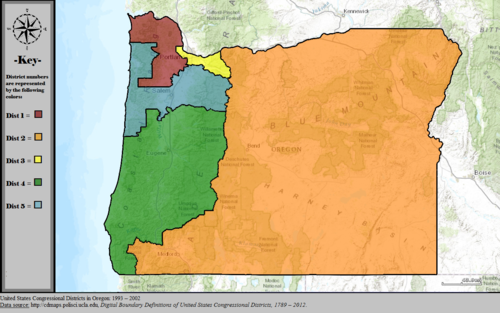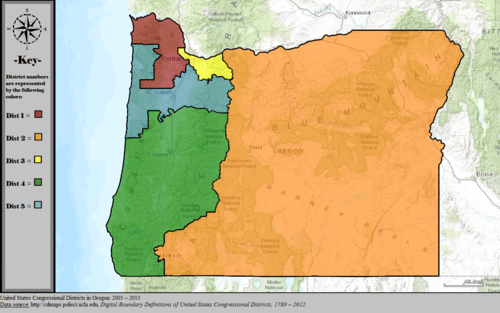
Interactive map version
The U.S. state of Oregon has had six United States congressional districts since 2023, when the 6th district was created as a result of the 2020 census. [1] The 5th district was added as a result of the 1980 census, and boundaries were redrawn following the population changes to each district, as determined by the 1990, 2000, 2010, and 2020 censuses.



















